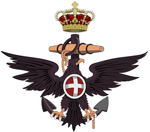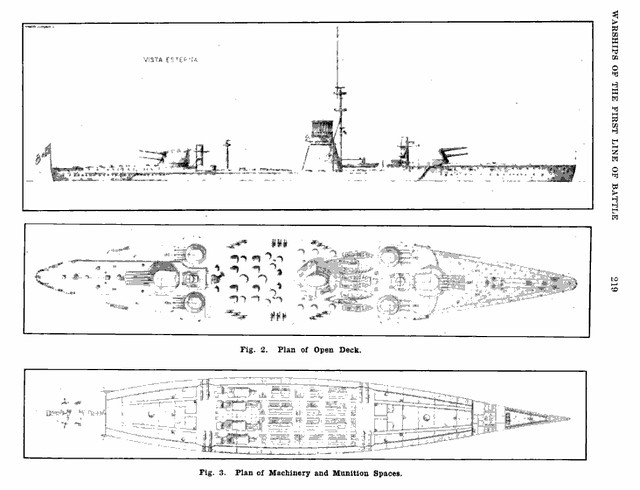General (naval engineers) Ferrati, based at La Spezia arsenal, was the designer of the first fast battleship class, the four RN Caracciolo. At the USMM (Italian Navy Historic Office) are stored a set of 9 follows on, in three groups, F, D and G, all based on quadruples 381 turrets.
These project can be seen as responses to the current French naval designs (Normandie, Lyon, Gille, Durand A and B).
Check the F designs here and the D designs here.
The G group, the most compete and satisfying is based on four quadruples 381 towers.
Design G:

33200 t., 220 l, 16 381/45 (4*4), 24 102/50 in singles.
Design G’ (probably Ferrati’s preferred one):

37200 t., 225 l, 16 381/45 (4*4), 16 170 (8*2), 24 102/50 in singles. Armor 270 and 170mm as in previous designs, with an additional 310 t. for each armor cm added.
(Source: Bollettino d’Archivio, Dic. 1988, A Rastrelli)


Greetings, Stefano,
Going back over the years, haven’t seen any convincing argument for the difference in citadel length between A & B barbettes versus that between C & D barbettes. The added length forward between the two barbettes comes at a cost, and certainly is weight better used in other respects. Have you come up with any reasons why the spacing? I looked for the “usual” culprits:
a torpedo flat, but then that appears forward of the ABD;
lessening stress on the hull members, but then that is better done by lowering the height (thus lowering weight) of the elevated B barbette; (this is tempting, given the fine hull lines forward. Aft, of course, C & D have greater hull volume but then face the upturn of the hull bottom); or
increasing magazine space forward on the assumption of greater need for shells in forward bearing fights (a bit of a stretch there in reasoning).
Have to believe the extra citadel length could easily cost up to 1000 tonnes in displacement.
Your thoughts?
Hi Melvin. What about a rudder protection measure to ensure maneuverability even if the extreme stern rudder is out of service?
I find interesting General Ferrati gives indications to scale tons/armour at will: the larger design, if protected to WWII standards would end up near to 60,000 tons.
But then, that’s aft, Stefano. Forward, with A and B turret placement is that “open” space between them. Indeed, one has to keep in mind that turrets are often placed close as their armour casts a “shadow” which is factored in to calculations on protection. If you increase spacing, you sometimes lower the barbette to reduce weights commensurately – which gets you to the Cuniberti concept.
Stefano, can you provide any info on this Ferrati proposal?

and can you tell me Ferrati’s full name? 🙂
No info in addition to the picture you linked, I have a drawing of the quintuple turret somewhere; it would be interesting to find put the original book. General Ferrati’s name is Edgardo (General, Naval Corps). He was in charge for the Caracciolo class design, and Umberto Pugliese worked with him on that project.
This is the abstract of Ferretti’s paper:
Paper No. 204. Warships of the First Line of Battle. By E. Ferretti.
Subject Matter: Generalities: dreadnaughts, ships of the line, cruisers, scouts, destroyers and submarines; paper restricted to discussion of evolution in warships of line and in cruiser types; increase in. size approaching limit on account of capacity of harbors, docks and yards and manageability. Gun armament: size and number increased; location; secondary armament, development; light guns. Armor: development and methods discussed. Underwater defense: lack of development; lack of data; chain nets, countermining, longitudinal bulkheads, outboard filling, third internal skin, multiplication of . transverse bulkheads, provisions for escape of gas. Speed increased; Probable lines of future develop- ment; radio telegraphy and aerial navigation; ships may be reduced to two types, ships of the line, .torpedo Ijoats- and submarines; six fundamental principles suggested and defined; public interest; heavy cost. Practical example: structure and arrangements, internal and external; guns and munitions; protection; propulsive machinery; speed and radius of action.
Treatment: Descriptive and expository. Pages, 26, with 3 half-tones and 1 diagram in text.
I see. So we basically know nothing about the design and could only speculate!
Could it be it was connected with the other Ferrati designs shown here and on your site in lines of the Carraciolo design, a sort of minimal proposal?